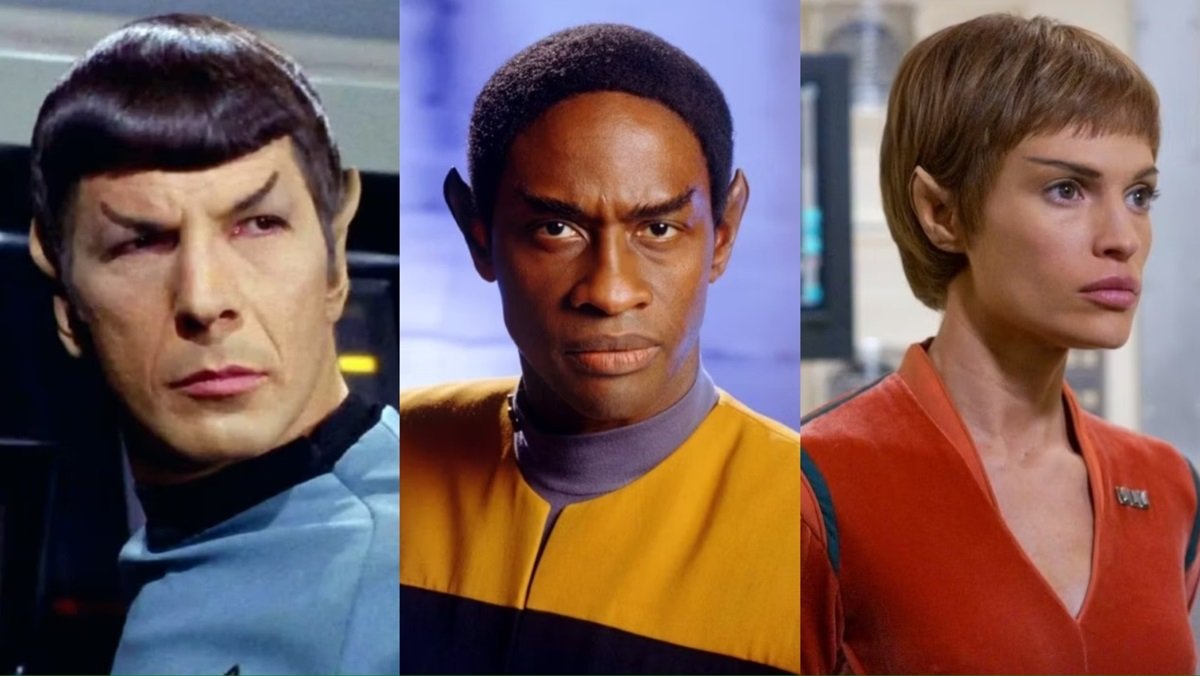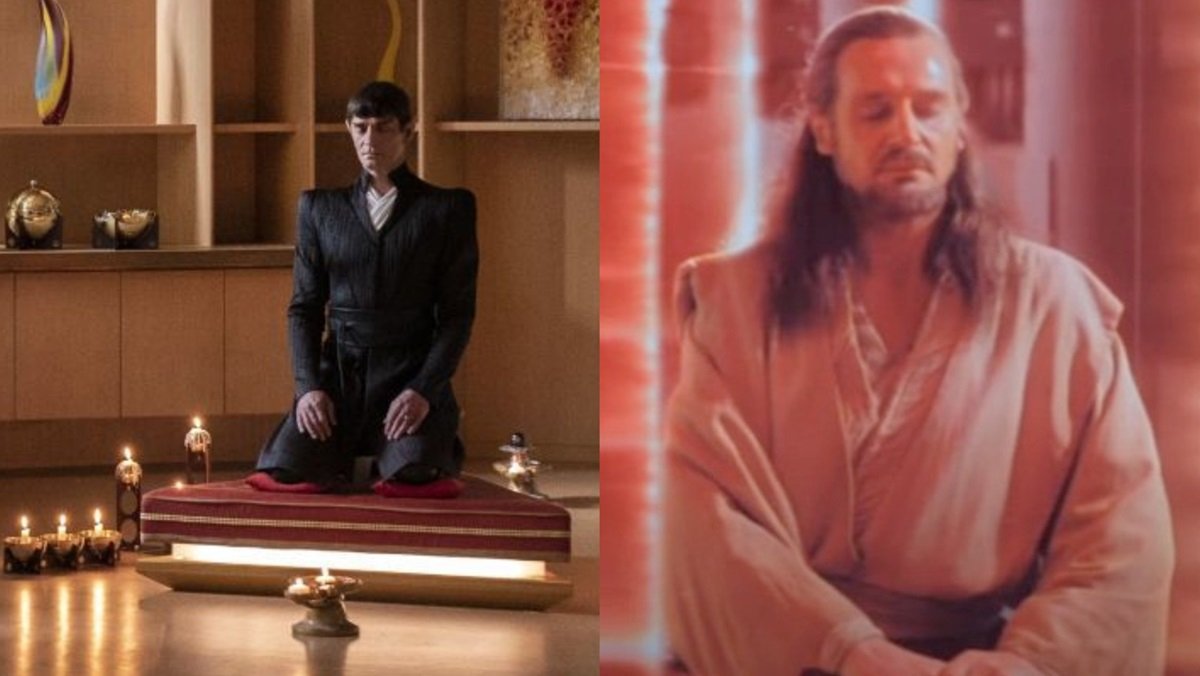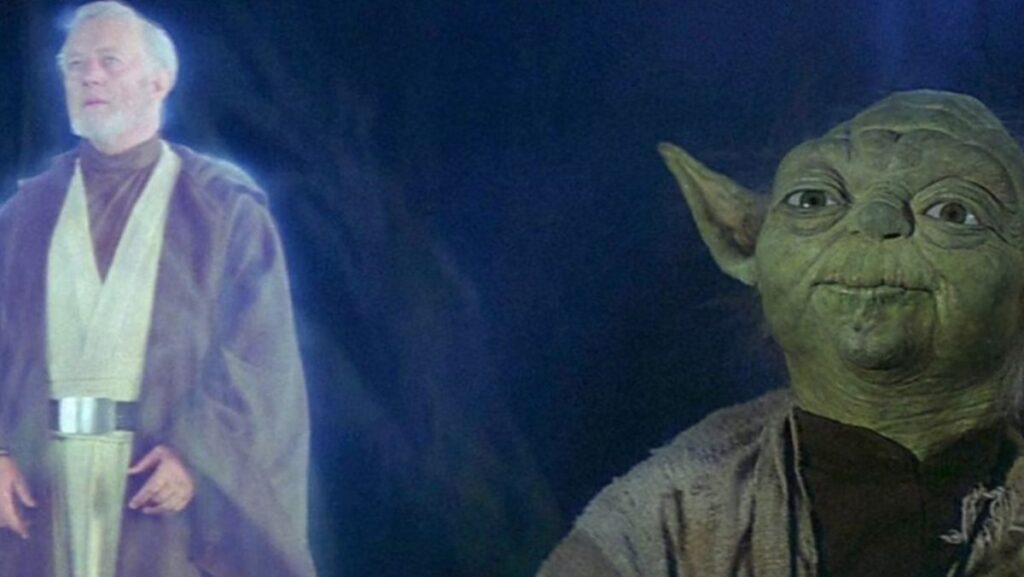Star Wars and Star Trek are very different sci-fi franchises. However, they share more than a few key similarities. Both have giant galactic governments made of hundreds of worlds. The Klingons in Star Trek and the Mandalorians of Star Wars have similar warrior culture traditions. One other thing modern Star Wars has leaned into in recent years is that the Jedi are extremely similar to Mr. Spock’s alien race, the Vulcans. That’s especially true ever since George Lucas fleshed out what the Jedi were truly like during the prequel trilogy. Now with The Acolyte, we’ve seen the Jedi at perhaps their most Vulcan-like.
When audiences watched the original Star Wars trilogy, we only ever saw two fully trained Jedi Knights—Obi-Wan Kenobi and Yoda. Both were in exile, decades after their order had fallen. So neither character really explained how the Jedi were meant to behave. The term “knights” suggested to most viewers that the Jedi were probably dashing, romantic knights in the Arthurian tradition, and not warrior monks in the Eastern sense. With the release of the prequels, however, we started to see the Jedi in large numbers. We learned that not only were they warrior monks, we also discovered how much they were like Star Trek‘s Vulcans.

For Star Trek’s Vulcans, Emotional Detachment Is Key, Much Like Star Wars‘ Jedi
In Star Trek, our reference point for Vulcans as a species was usually Leonard Nimoy’s Mr. Spock. We also saw other prominent Vulcans in the original series, like his father Sarek. Over the years, we met Lt. Saavik, Tuvok, and T’Pol. Throughout many movies and TV series, we learned these pointy-eared aliens actually had very deep emotions, only they learned to suppress them. Simply put, their emotions got in the way of their mental disciplines and adherence to logic, hindering their ability to mind meld and use their other psychic powers. They can only achieve these powers through total serenity, bypassing all emotion. Their genetically identical (and passionate) Romulan cousins couldn’t access the same powers, because emotion rules them.

Mental Discipline and Training Is Crucial to Both Vulcan and Jedi Alike
Vulcans undergo intense emotional training as small children, just as Jedi do. As adults, Vulcans also go through different disciplines and rituals to purge remaining emotion. Spock goes through the Kolinahr discipline in Star Trek: The Motion Picture, although he fails to purge his emotions. Those who do so achieve a higher status within Vulcan society. In The Acolyte, we see Torbin partaking in something called the Barash Vow, where they go into deep meditation. Despite their logic, the Vulcans are very tradition-bound, and function in temples of different varieties. In these temples, we often see them wearing hooded robes. The Vulcans and Jedi definitely share an aesthetic.
In Star Wars, we learned that for Jedi to truly access the Force, they must let go of emotional attachments. That’s why the Jedi Council forbids those in the order to marry or have children (with few exceptions). Although Jedi don’t totally suppress all emotions, they do crack a smile and make jokes here and there. Especially younger Padawans, who have not achieved knight status. Most Vulcans don’t even do that. But the Jedi are otherwise cold and aloof, seeing their emotions as an impediment, not a strength. The Jedi live a sparse lifestyle, essentially as monks in the Jedi temple. Vulcans in Star Trek also believe owning things for the sake of it is “illogical.” Vulcans, like the Jedi Knights, are pacifists, but both have superior fighting skills if need be (see “Amok Time” from the original series). Of course, to the Jedi, fighting skills are far more important.

Both Vulcans and Jedi Have Incredible Mental Powers
There are big differences, however. Jedi and Vulcans have mental powers, but Vulcans need physical contact to make a psychic connection, or mind meld. They can’t just read thoughts from a distance, or command people to do things by merely thinking it, like the Jedi do. Vulcans can marry, even if their emotional attachments are very limited. It’s more about procreation and perpetuating the species, hence all the arranged Vulcan marriages. The Jedi are not allowed to have children, with rare exceptions. The biggest difference between the Jedi and the Vulcans is the most obvious—the Vulcans are a race, while the Jedi is a religion composed of many races.
Vulcans Are the Glue Holding the Federation Together, Like the Jedi Are for the Republic
Yet the Vulcans are the backbone of the Federation, providing the organization with logic and guidance. The Jedi served the same function for the Republic for generations. In the recent seasons of Star Trek: Discovery, we learned that the Federation falls apart quickly without the Vulcans. And we know what became of the Republic without the Jedi, despite their failings. Without a doubt, it was never intentional for the Vulcans and the Jedi to become so similar. Nevertheless, it’s remarkable to see how much the Jedi have paralleled the Vulcans over the last few decades of both franchises. May the Force be with the Jedi, and may they also live long and prosper.

